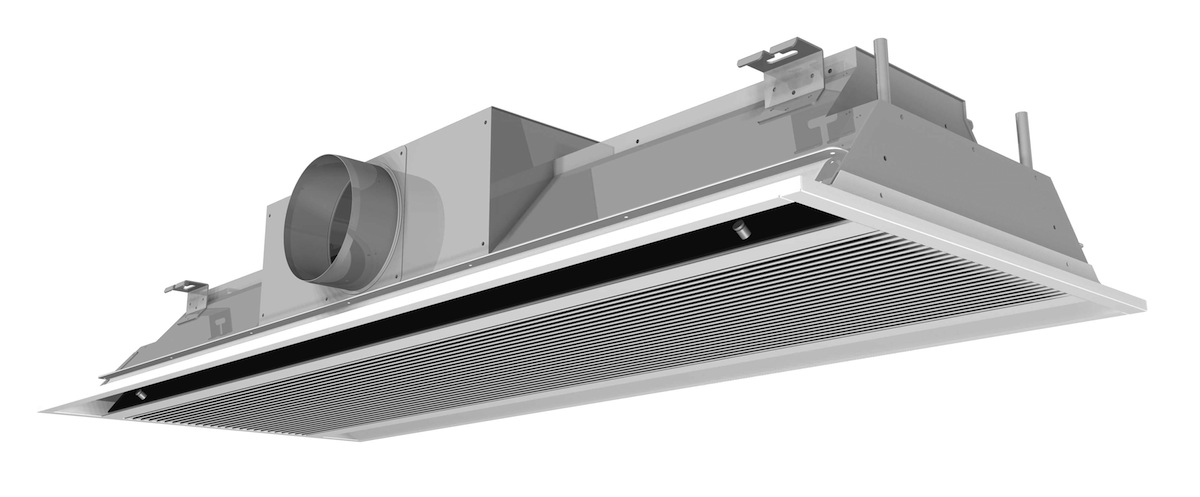A new book from ASHRAE and the Federation of European Heating, Ventilation and Air-Conditioning Associations (REHVA) provides guidance on designing chilled-beam systems.
The Active and Passive Beam Application Design Guide was produced through a collaboration of worldwide experts to give system designers a current, authoritative guide on successfully applying active and passive beam technology. Building on REHVA’s previously published Chilled Beam Application Guidebook, the new guide provides up-to-date tools and advice for designing, commissioning, and operating chilled-beam systems. It includes examples of active and passive beam calculations and selections.
Active and passive beam systems are energy-efficient solutions for spaces that require individual zone control and where internal moisture loads are moderate. “Active and passive beam systems provide good thermal comfort and energy and space saving advantages; and the operation of such systems is simple, with low maintenance requirements,” co-editor John Woollett said. “In a building where the goal is a low energy usage index, beams can be an excellent choice of indoor climate product.”
Although they are often referred to as “chilled” beams, in many cases active beams can be used for both heating and cooling. Active and passive beams are room air recirculation devices that transfer sensible heat to and from the space using water. In addition, conditioned primary air is ducted to active beams. Active and passive beams may be integrated with acoustic ceilings or independently mounted.
Related Stories
| Jun 18, 2013
Report: HVAC occupancy sensors could slash building energy demand by 18%
Researchers at the DOE's Pacific Northwest National Laboratory conclude that significant energy savings can be achieved by varying ventilation levels based on the number of people in a given space.
| Apr 1, 2013
Half of building owners use 'smart' technologies, says survey
A survey of 291 building owners by IDC Energy Insights shows that 50% of owners use smart building technologies, such as HVAC controls, lighting controls, and analytics/data management.
| Mar 27, 2013
Small but mighty: Berkeley public library’s net-zero gem
The Building Team for Berkeley, Calif.’s new 9,500-sf West Branch library aims to achieve net-zero—and possibly net-positive—energy performance with the help of clever passive design techniques.
| Feb 3, 2013
Electronic surveying improves accuracy on BIM-driven hospital project
A mechanical contractor combines an electronic surveying tool with a BIM model to make significant productivity gains in a large-scale hospital project.
| Feb 3, 2013
Clever engineering helps create design excellence
A mechanical engineering team overcomes numerous hurdles to help make a new federal courthouse in Iowa a showpiece of ‘government work’ at its best.
| Jan 16, 2013
Achieving Educational Excellence with Greater Comfort in Hudson, Iowa
Improving a problematic temperature control system at Hudson High School paves the way for enhanced comfort, greater energy efficiency, and significant savings.
| Jun 1, 2012
New BD+C University Course on Insulated Metal Panels available
By completing this course, you earn 1.0 HSW/SD AIA Learning Units.
| May 29, 2012
Reconstruction Awards Entry Information
Download a PDF of the Entry Information at the bottom of this page.















